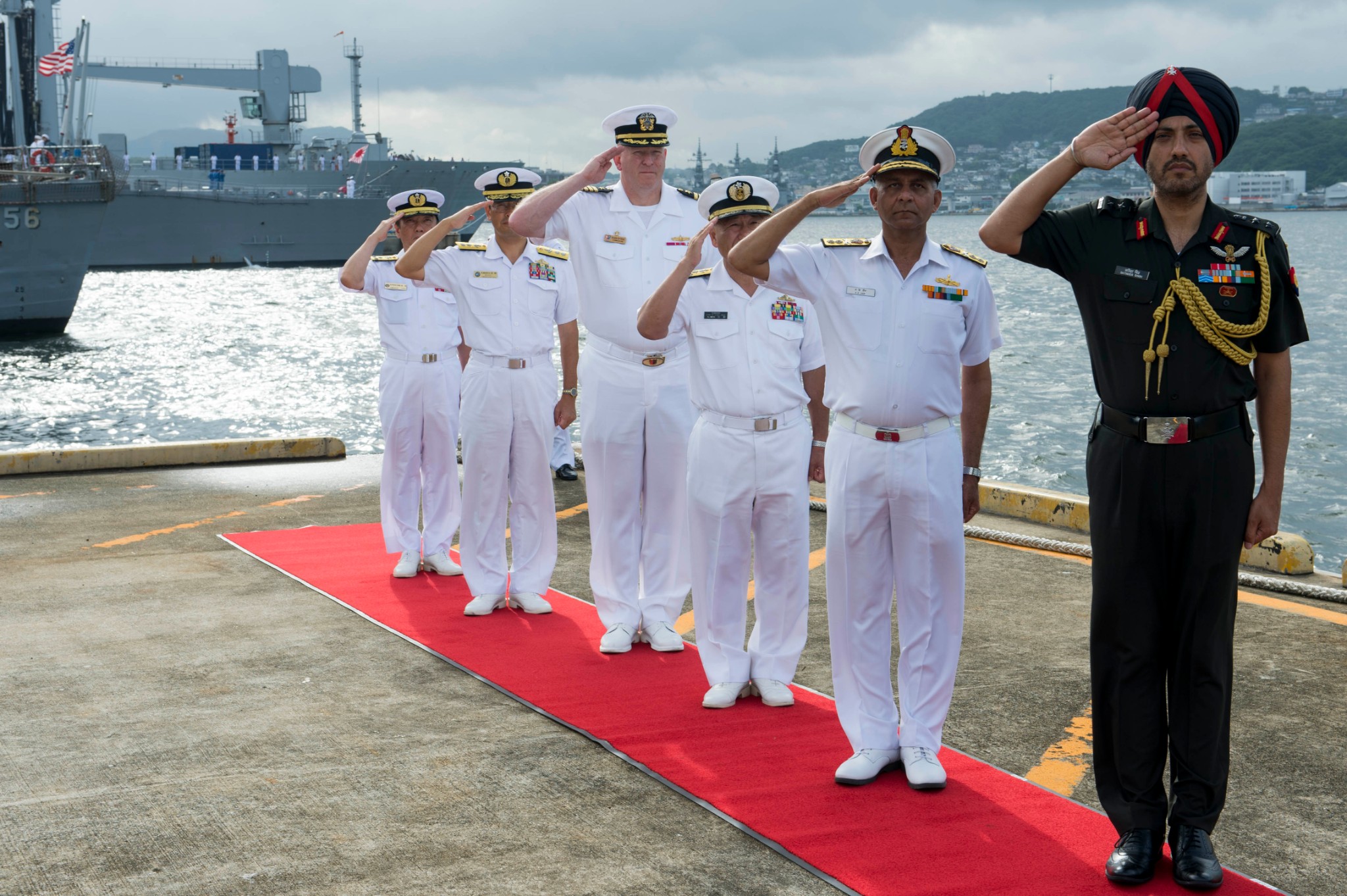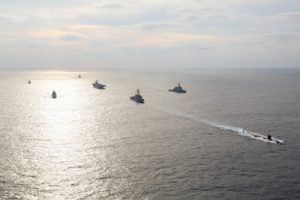 Image Courtesy of Official U.S. Navy Page on Flickr
Image Courtesy of Official U.S. Navy Page on Flickr
Possible Results of the Quadrilateral Security Dialogue
On October 6, the United States Secretary of State and the foreign ministers of Australia, India, and Japan, met in Tokyo to discuss matters that would ensure peace and stability in the Indo-Pacific region. The group of nations, known as the Quadrilateral Security Dialogue (Quad), is a response to a growing China whose economic and military might is causing instability to an already established international order. China views the Quad as a threat, a clear scheme that four countries are teaming up against it. Furthermore, China sees this collaboration as an eleventh-hour move for the United States to maintain its own hegemony.
A relatively new forum, the Quad still lacks the track record and credibility of a formal alliance. Initially begun as a humanitarian effort during the 2004 Asian tsunami and coined the Tsunami Core Group before being dismantled, the group of nations reconvened in 2007 on the sidelines of the Association of Southeast Nations (ASEAN) summit in Manila, the Philippines. In 2008, Australia withdrew from the group after ensuring China that the 2007 sideline will not happen again, an action seen as a potential win for the East Asian nation.
Five years later in December of 2012, the group of nations reconvened at the request of former Japanese Prime Minister Shinzo Abe. The group, whose name was then changed to the Democratic Security Diamond (DSD), was formed to “safeguard the maritime commons stretching from the Indian Ocean region to the Western Pacific.” Abe felt that a militarily and economically growing China needed to be curbed. Since 2016, and often referred to as the Quad 2.0, the quartet of countries has met more regularly with the goal of creating a “free and open Indo-Pacific.”
It is too soon to speculate whether the Quad’s efforts will actually restrain China. Nevertheless, should meetings and discussion continue, there is a high chance that two end results may occur:
India Increases its Role in International Affairs

U.S. Navy, Japan Maritime Self-Defense Force (JMSDF), and Indian Navy engaged in Malabar exercise (Sept. 2019) (Photo courtesy of JMSDF and U.S. Pacific Fleet on Flickr; CC BY-NC 2.0)
Engaging in military drills, such as the Malabar naval exercises, with the other Quad member countries integrates India in security affairs outside of its own backyard. While the actions of the Quad inevitably place the spotlight on China, focus is also placed on India, a country that has, to an extent, taken a backseat in international affairs. Its decision to join the Quad comes from fear that the Indian Ocean is gradually being usurped by China. India has typically concentrated its efforts on issues with bordering countries, engaging in peace-making with Afghanistan and conflicts against Pakistan and China, among other places. The Quad’s increasing focus on military exercises and exchanges reveals a country with a powerful military that has become even stronger due to its recent new relationship with the United States.
Nothing Happens
Without a clear and unified objective, there runs the risk that the Quad will break up for a second time; in other words, another win for China. This month’s Quad meeting featured language from the United States voicing clear dissatisfaction towards China. Perhaps because of cultural differences, no other member country used such targeted language and instead relied on safe ideas such as Japan’s goal to “build stable relations with neighboring countries including China and Russia.” For now, the alliance’s unhappiness with China is implied and based on past or current tensions with each country.
This is also not the first time that the world has seen an alliance of nations in the Indo-Pacific region. Consisting of the United States, France, Great Britain, New Zealand, Australia, the Philippines, Thailand, and Pakistan, the Southeast Asia Treaty Organization (SEATO) was created in 1954 with hopes to contain the spread of communism. While there was a fundamental goal, intergroup difficulties such as differing perspectives and a large presence of Western nations in an Asian space ultimately led to the dismantling of the alliance. It is not enough to rest upon the laurels that times are different now.
How the Quad intends to contain an increasingly stronger China, or secure the Indo-Pacific region in general, will determine if this is the beginning of another Cold War. In the meantime, the tit-for-tat situations with China will continue. Furthermore, a security dilemma is already noticeable. The buildup of the Quad members’ military forces is happening alongside a Chinese military force that is also growing stronger. With unification and clarity, perhaps there will be not only a stronger India on the global stage, but also an alliance that will put an end to pressure and coercion in the Indo-Pacific region.





